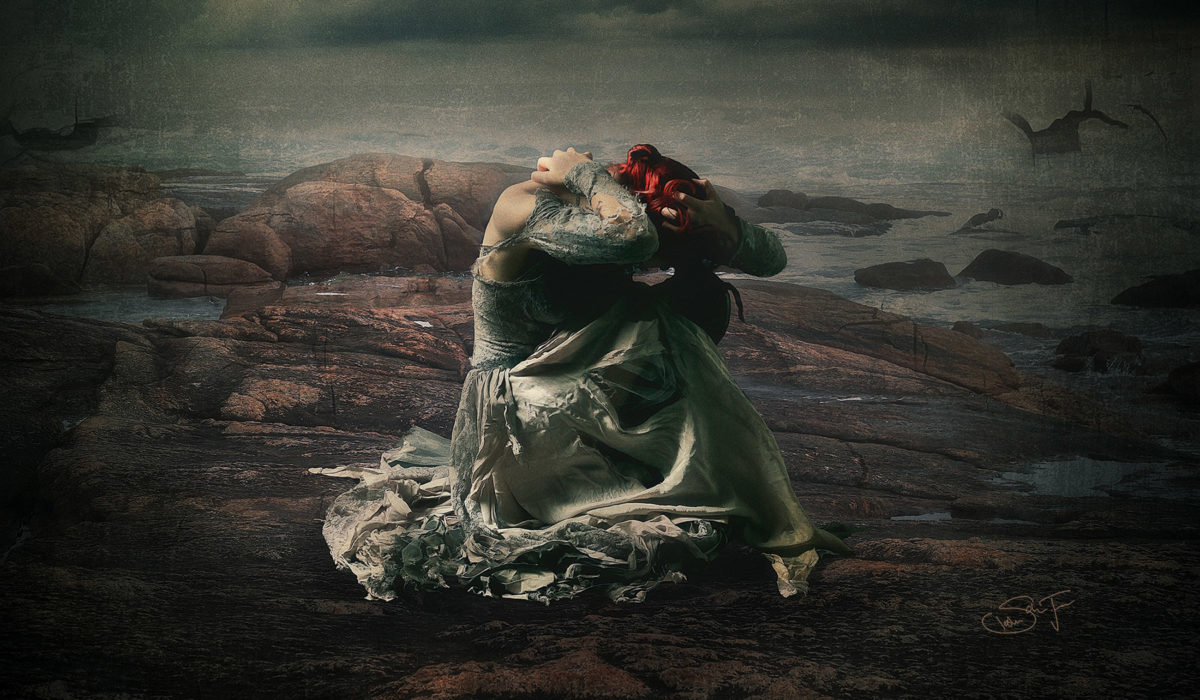— The featured “AWAKE” artist of our June 2017 edition (No. 28) of Living the Photo Artistic Life, Leslie Schrader-Fagnan is based in upstate New York (in the lovely “Finger Lakes” region), and her work has gained more and more attention over the past year, steadily increasing her popularity in the group and making this interview all the more exciting to share with you . . .
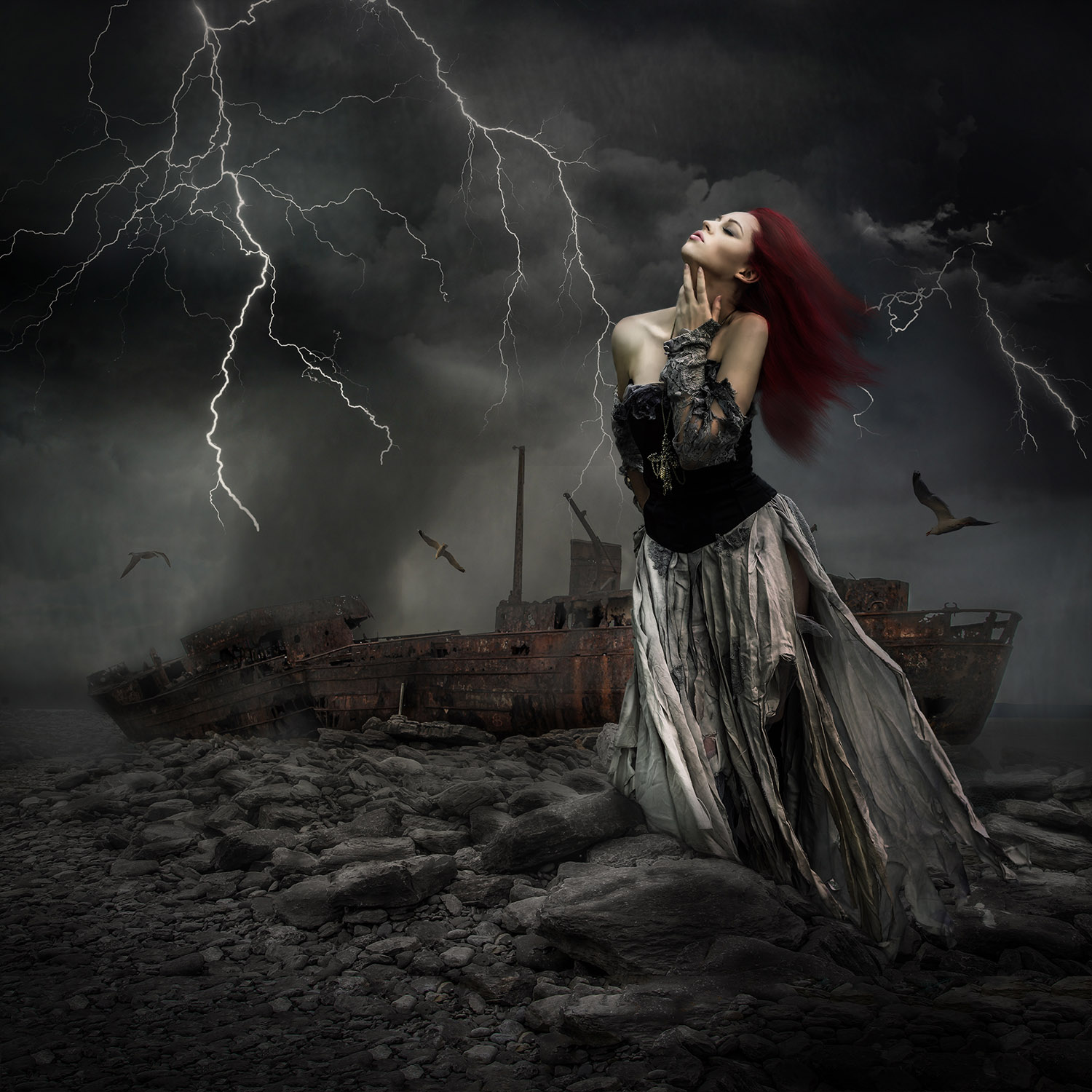
Q. When did your artistic journey begin?
I considered myself a crafter, but never an artist until a year ago. I started off learning to paint ceramics (the knick-knack type) in my 20s. My first exposure to computer-based “art” would be a job I had about 25 years ago creating presentations for others’ meetings. I found myself drawing schematics in PowerPoint (definitely not to scale, and not an easy task — PowerPoint wasn’t meant for drawing!)
My next job after that was at a graphic design firm where I learned a lot of the ins and outs about design, typography, and the printing process. I worked exclusively in CMYK, so it took me a bit to make the change to RGB. For the next near-ten years, I used Photoshop almost every single day and I thought I knew it inside and out. I laugh when I think about that now, because I didn’t even know 1/500th of what it was capable of doing! If I only knew then what I know now.
The first few years, I couldn’t wait to go to work, but I eventually learned that I didn’t like creating for others. It became too stressful for me and my creativity pretty much vanished. After this job ended, I didn’t touch Photoshop again for 12 years . . .
During that time away from Photoshop, I picked up a new crafty hobby here and there, including creating stepping stones from a cement mix to the finished paint job, painting on glass, paper crafts, photography and such, but nothing ever lasted long, primarily because I started doing “custom work.” What clearly never changed was that creating for others simply doesn’t work for me, which is why I have a very strict policy of not doing custom work anymore. I create for me and only me.
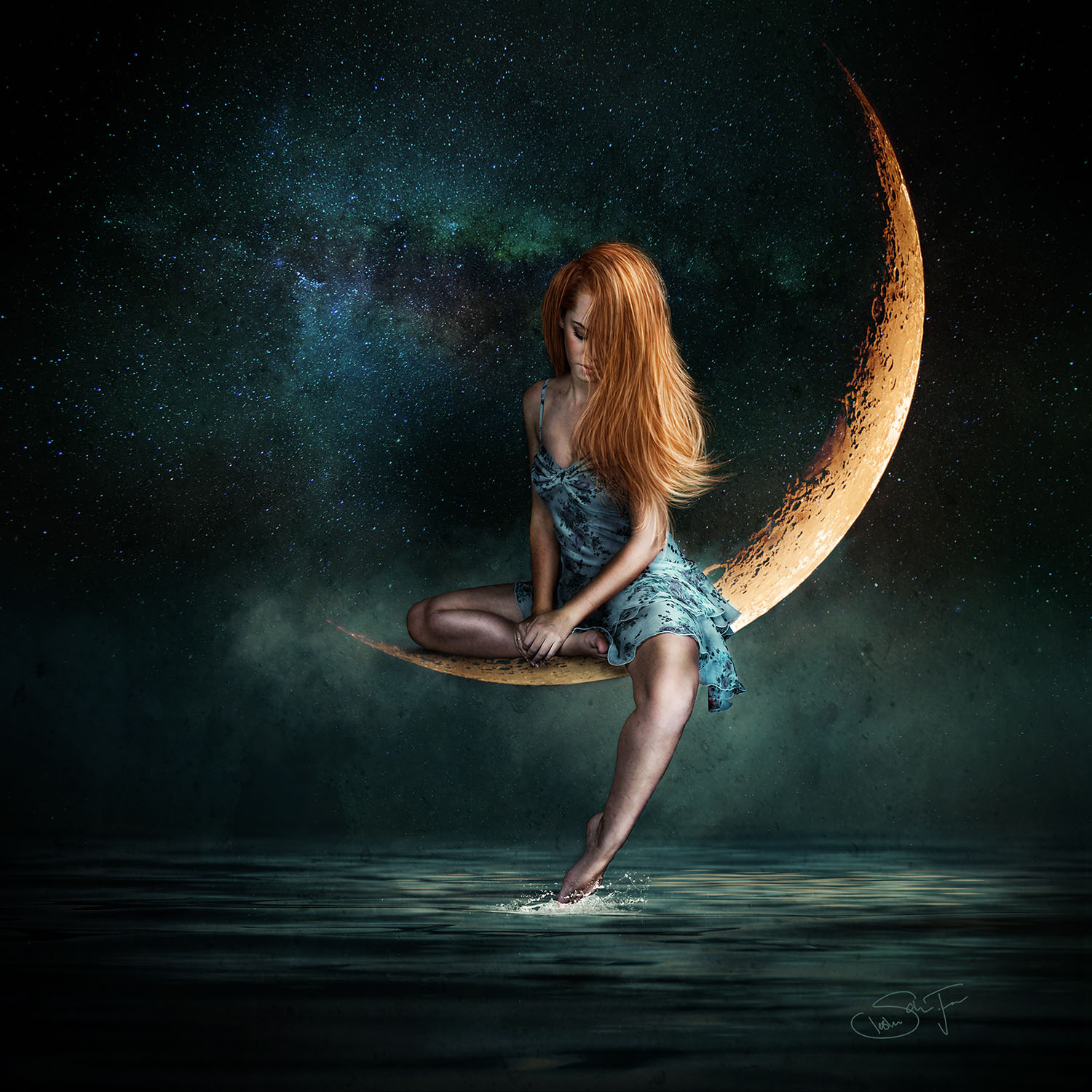
Q. What was it that brought you back to Photoshop and got you started in digital photo artistry?
Not too long after leaving work because of a medical condition (something called Chiari malformation, a brain/neurological disorder), I started to become a bored housewife … with, what I felt, no longer any purpose in life. I found myself needing a therapeutic outlet to deal with how my path in life had changed in a direction that I had not planned. I dabbled in many different paper crafts for a while, but that eventually bored me as well. Plus, it made such a mess and I hated cleaning it up. I had paint, glitter, and glue all over me and everything else I touched. I was also in love with photography at the time. And even though I never became great at that (and most likely never will), I still enjoyed taking images of places I visited, flowers and other various nature landscapes.
Somehow, by chance in October 2015, I came across digital scrapbooking. I loved it, but it still wasn’t exactly what I was looking for. Early on, I came across Anna Aspnes (who happens to now be one of the top AWAKE and KAIZEN content providers) and realized immediately that her style of scrapping was exactly what I WAS looking for – so very artsy and beautiful – and absolutely no mess to clean up when I was done! Even though the majority of my work now isn’t really in an Anna Aspnes style, my scrapbooking style is still 100% Anna.
All the while, I kept seeing this thing called “Photoshop Artistry” showing up in my Facebook news feed. I would click on the link, drool over all the images in the advertisement, and decide it was so far out of my league that I bypassed it every time.
One day, however, I saw a post from Anna that endorsed the class, so I looked into it more seriously. And in December 2015, I joined the class, then a month later, I joined the “AWAKE” group . . .
It was then that everything changed for me.
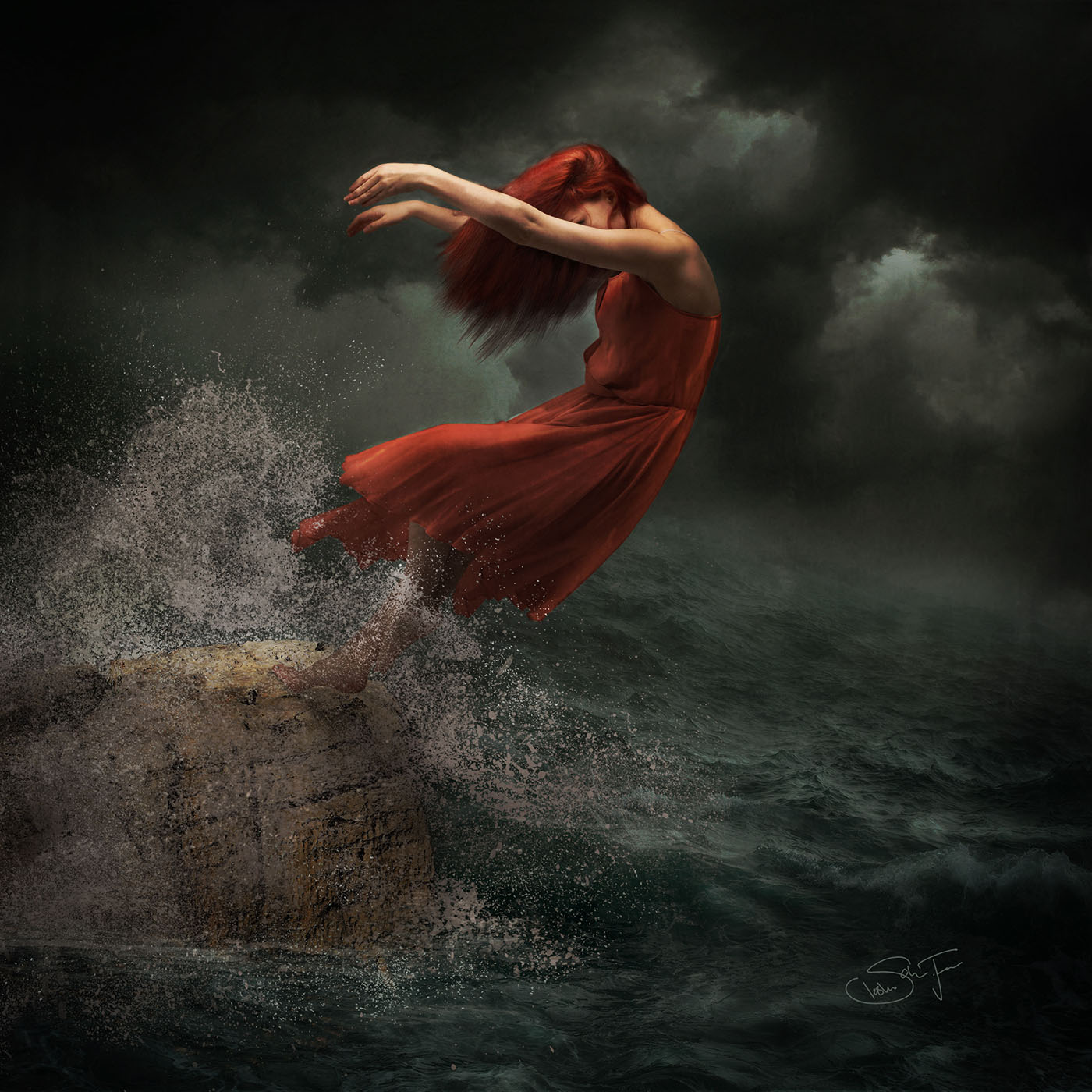
Q. What most inspires your work?
Quite honestly, for the majority of my work, I would have to say an emotion, but not necessarily an emotion I am feeling at that moment. They are, however, emotions I had felt over the past two years at one point or another because of my life changes. Most people experience emotions of sadness, anger, loss, abandonment, being trapped, being afraid, being attacked, etc., at some point in their lives, but not everyone can put those emotions into words.
I am hoping that my art makes the viewer FEEL something – anything – even if it’s that the image is too disturbing for them, because real life can be disturbing. I want the viewer to create their own story when they look at my image … their own story of how the subject got to the place she is in, what happened before, and what is going to happen next.
I have to say something here – a lot of people find the majority of my work to lean toward the dark side, and I would agree with them (one of my friends calls me the “Goddess of the Dark Side of Art”). However, what others find ominous, I find comforting. To me, a raging storm and violent sea instill a curious sense of comfort, a sense of peace and calming. I want to BE that girl standing out in the storm or in the middle of a turbulent ocean. It’s all subjective.
Other inspirations for me are other artists, movie scenes, lines in a book I am reading, or an image I come across that will spark an idea.
Q. What does it mean to you to “live the photo artistic life”?
For me, living the photo artistic life means freedom. Freedom from the chains that bound me in the past. It wasn’t until I started living this life and using my art as a means of therapy that I was able to stop identifying myself as “Leslie, the woman with the brain condition” and start identifying myself as simply “Leslie,” or even, “Leslie, the artist.”
Living the photo artistic life opened doors I didn’t know existed in the art world.
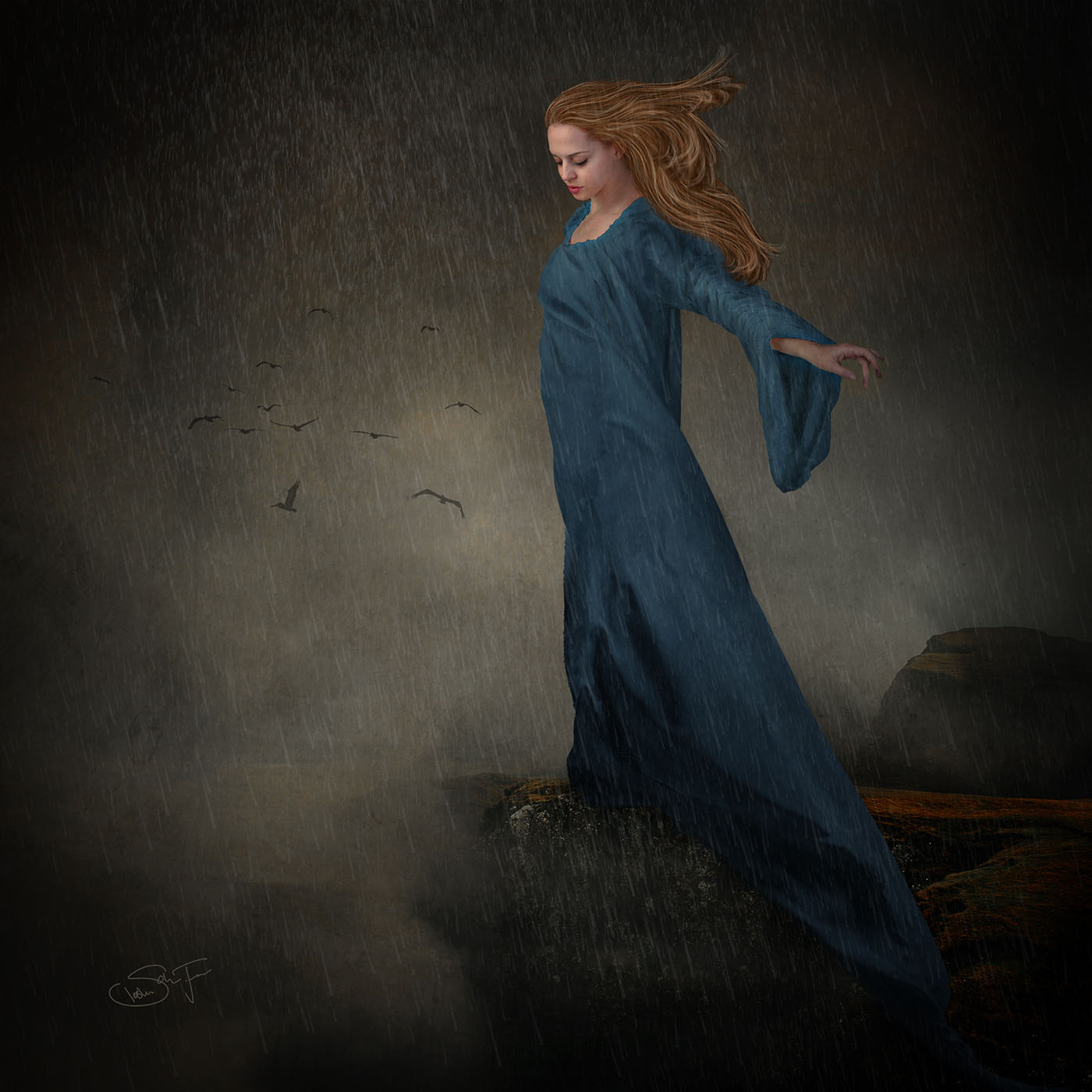
Living this way also means finding beauty in things I otherwise just ignored — for example, a cracked sidewalk, shattered glass, or even crumbled up sheet rock. How many people do you find running around taking photographs of these things other than a photo artist? (And, oh, the stares and odd looks you get from others while taking these photographs!)
Another important part of living the photo artistic life has been gaining some of the very best friendships of like-minded people, not only in my own town, but across the globe. I can’t imagine a life without these others who also live the photo artistic life each and every day and understand 100% what it is that captivates me. It’s not easy to discuss this world — the world of serious photo artistry, the world of “AWAKE” — with someone who isn’t part of it and can’t really hope to understand it.
Q. Do you have a process you tend to follow when working on your compositions?
About half of the time, my process starts with me having an idea for a composite based on a general theme, which leads me to search for the exact images to complete my vision. The other half of the time, I come across an image that sparks the creative process itself. I have a lot of ideas swimming around in my head that have yet to see the light of day because I can’t find the exact model image portraying the right emotion or the supporting images to complete it, so I will be learning portrait photography soon, which will enable me to capture exactly what I want. So while sometimes I use my own photos for the supporting images, I generally use stock for my models. At least for now.
After I have all my images on my canvas, I start playing around with the elements, never extracting at this point. I have taken the time in the past to extract a model or other secondary subject only to find they didn’t work exactly as I had planned.
But it’s really after everything is put together that the fun part starts for me: color grading and lighting! I love working with complementary colors, especially teal and orange and the various shades on either side. And I seriously enjoy this part so much that sometimes I delete all my curves layers just to do it again!
An image generally takes me a minimum of eight hours to complete, sometimes a bit more. Very seldom is it less. But for me, it’s eight-plus hours of pure bliss, and when I look at the clock, I can’t believe so many hours have gone by.
In the beginning, I used to hurry up and post something as soon as I finished it. I don’t do that anymore. My image always sits at least overnight. Or at the very least, long enough for me to be away from it for several hours. Determining whether a piece is truly finished doesn’t happen until I have had a chance to look at it with fresh eyes.
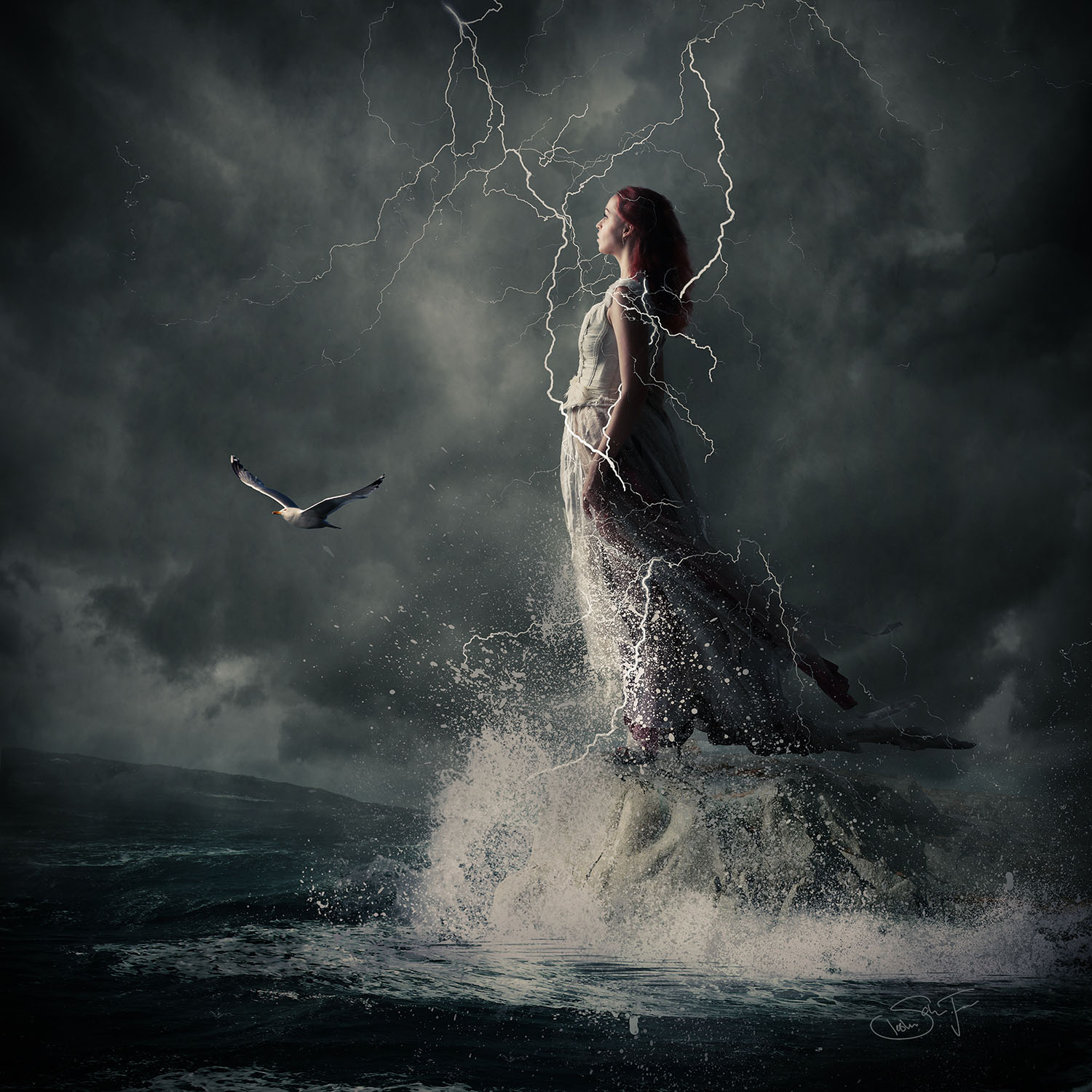
Q. Any advice or tips for other artists eager to improve?
My advice for other artists is to never stop learning, and to learn from anyone and everyone. That’s what is so great about AWAKE, KAIZEN, and Shift Art (which is now itself part of the KAIZEN experience). We are exposed to tutorials from so many different artists who do things we may have never thought of doing. Incorporating one or two techniques and ideas from many artists is what brought me to finally having my own style.
Also, if you come across a challenge,
take it up and DO it, even if you don’t share your work with others. Challenges have helped with my creativity immensely.
Q.What’s your next step as an artist? Where do you wish to take your art in the years ahead?
I have so many different plans as to where I am going next. As I stated before, I need to learn to do my own portrait photography. I would love to be able to set up shop in my town, photograph people, and place them into their own surreal worlds. I have several models lined up for this already.
Something else high on my priority list is to learn to paint with Photoshop – employing no images in my composition, just paint strokes. This will definitely be a challenge for me as I am not really “painterly inclined,” but what’s life without a challenge? Regardless of where I end up, I know I will have a great time getting there!

